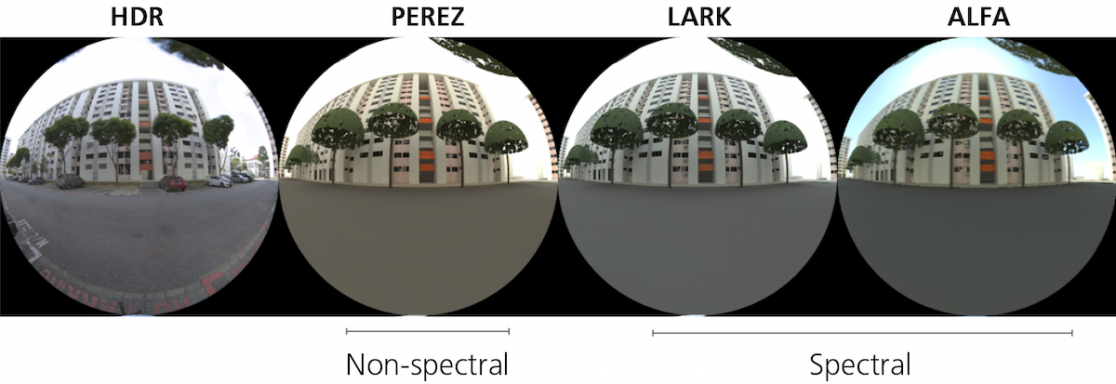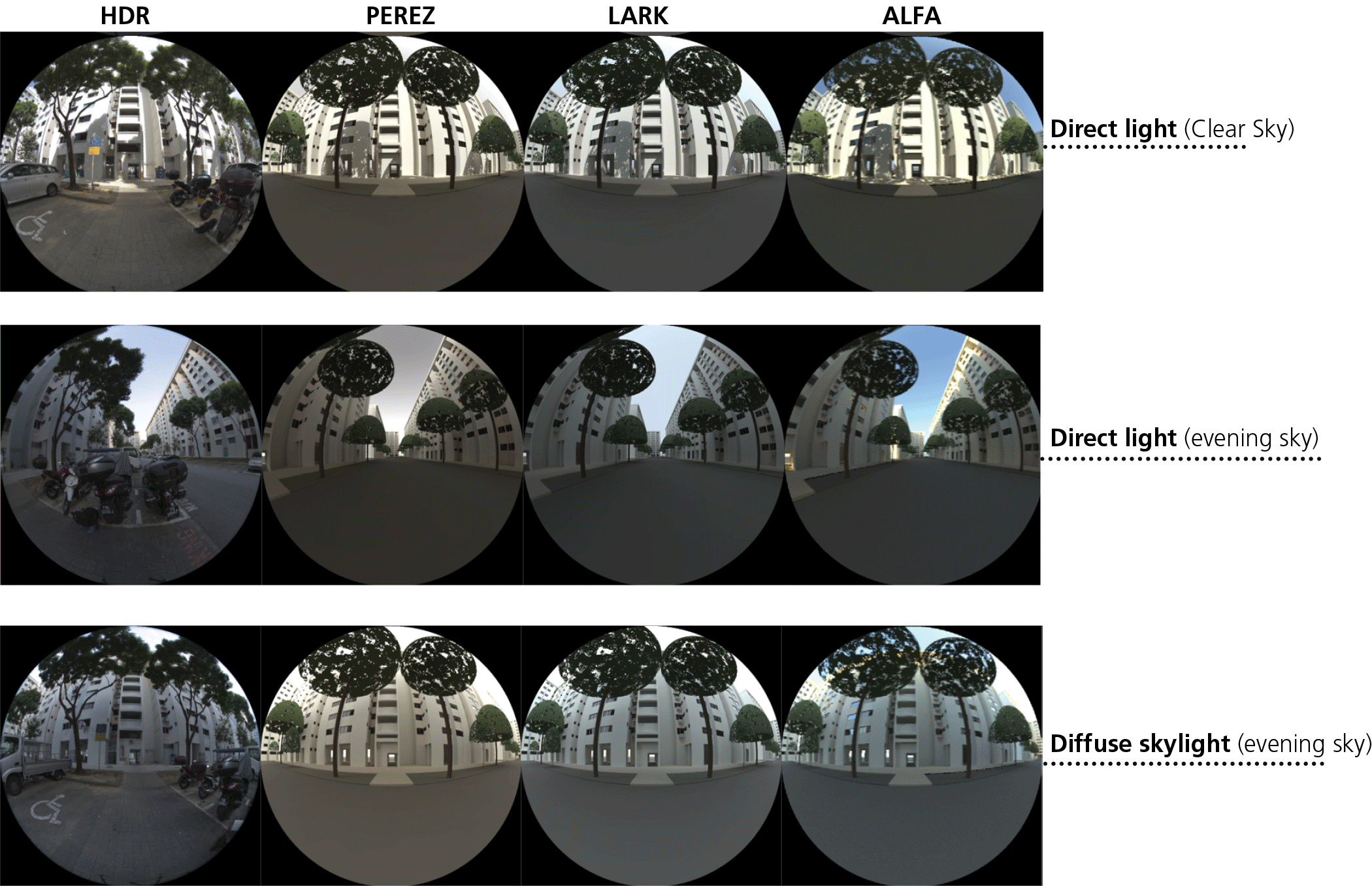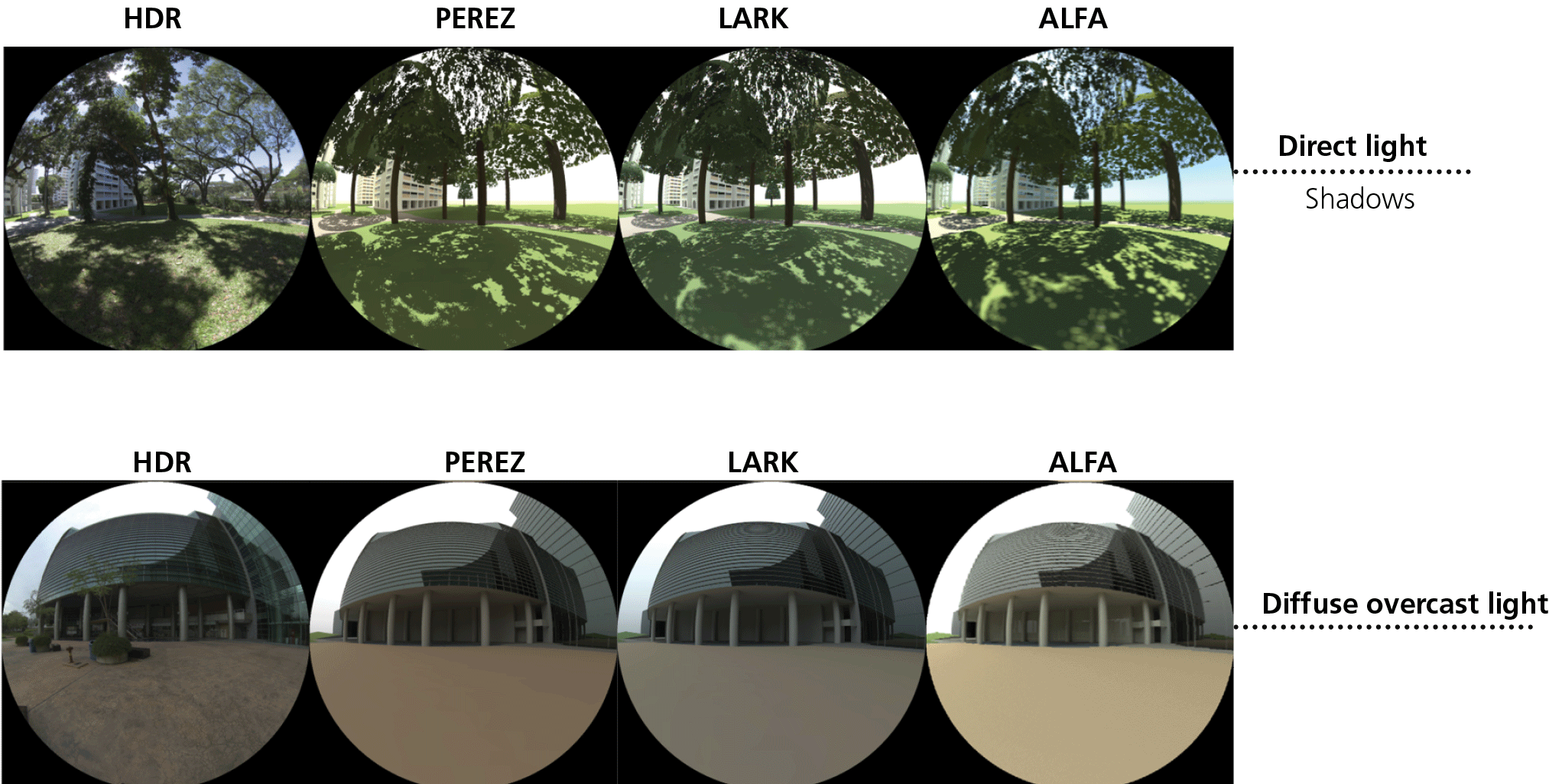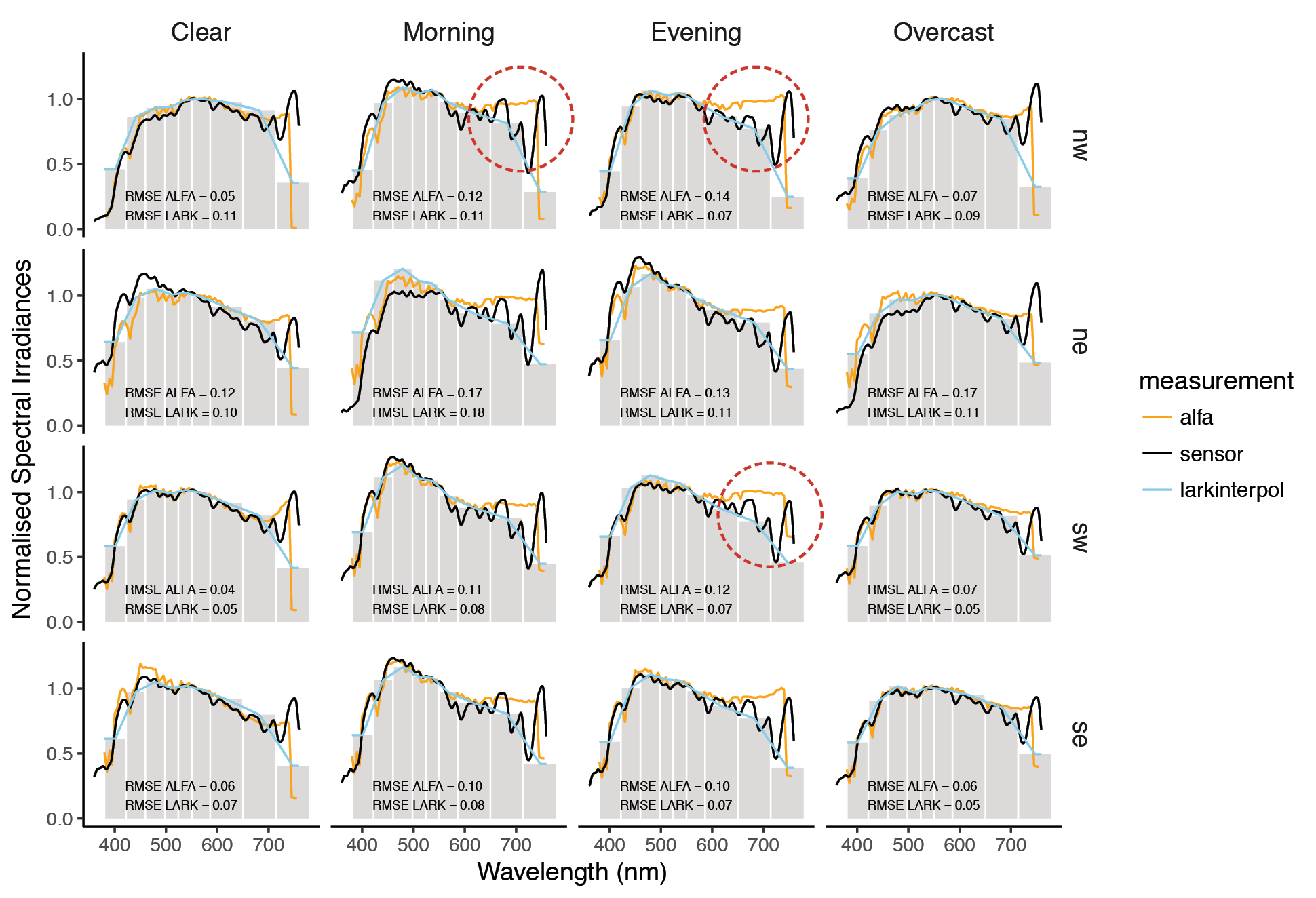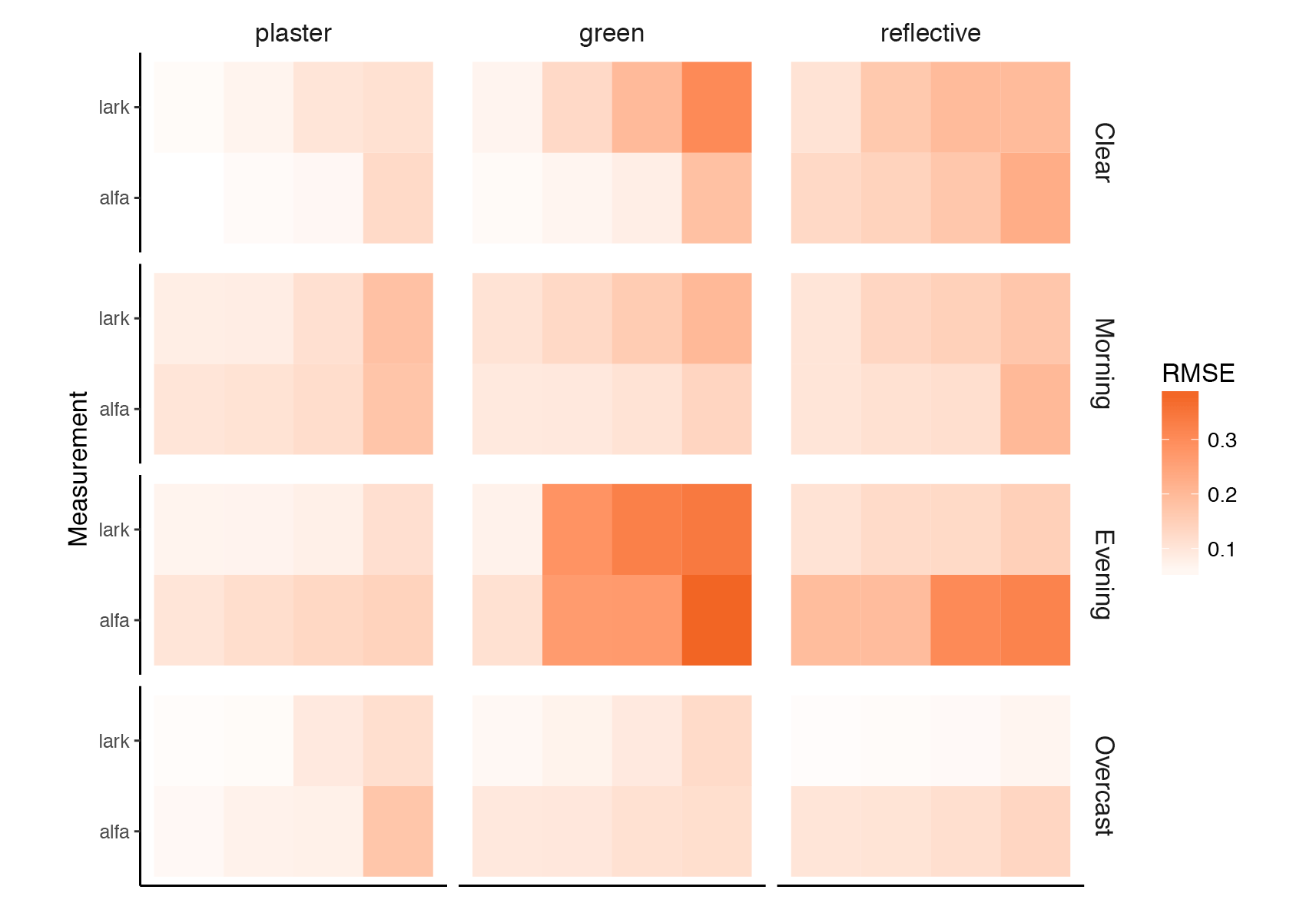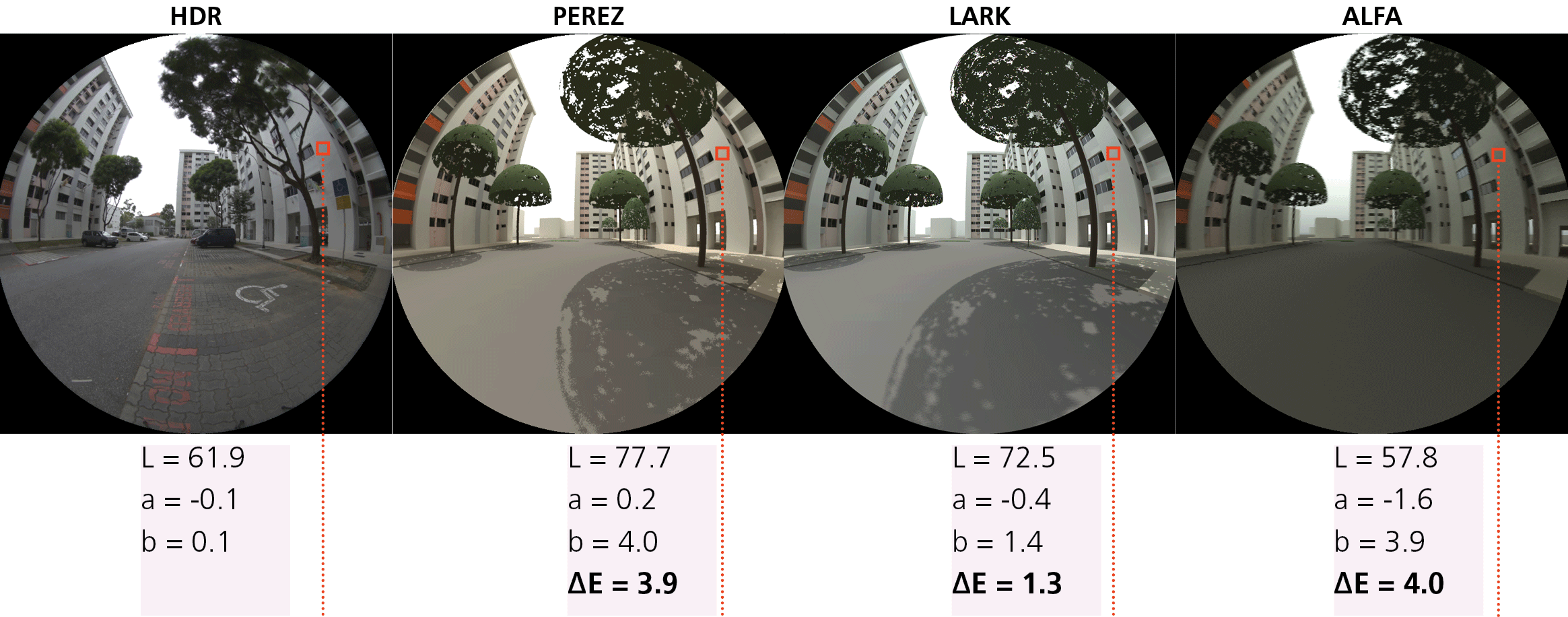Spectral daylight simulations
PhD research
Current daylight simulation platforms most commonly use luminance-based sky models (such as the ideal CIE or all-weather Perez model skies) that lack spectral and colourimetric information. In this research project, I compare the differences, challenges, and outputs of using two Radiance based multi-spectral daylight simulation platforms––LARK and ALFA. LARK is based on the N-step method (where the spectrum is divided into N consecutive steps and simulations carried out in N-channels rather than the standard three channels (RGB)) and can be run using measured spectral power distribution of the sky. Alternatively, ALFA is based on pre-computed coloured sky model generated using libRadtran (an atmospheric radiative transfer library). The comparisons are demonstrated using three complex urban scenes with three different materiality––plaster facades, vegetation and glass facades––under different sky conditions. I presented the framework of this research at the Radiance workshop, in Loughborough, 2018. Click here for the presentation.
Contributions, programs, and tools used
- Visual, spectral, and colour difference comparisons
- LARK (Grasshopper plugin) for spectral daylight simulations
- ALFA (Rhino plugin) for spectral daylight simulations
- 3D modelling in Rhino
- FARO Focus 3D laser scanner
- Illuminance spectrophotometer
- HDR Photography
- Photosphere (HDR image processing)
- Radiance
- R script
